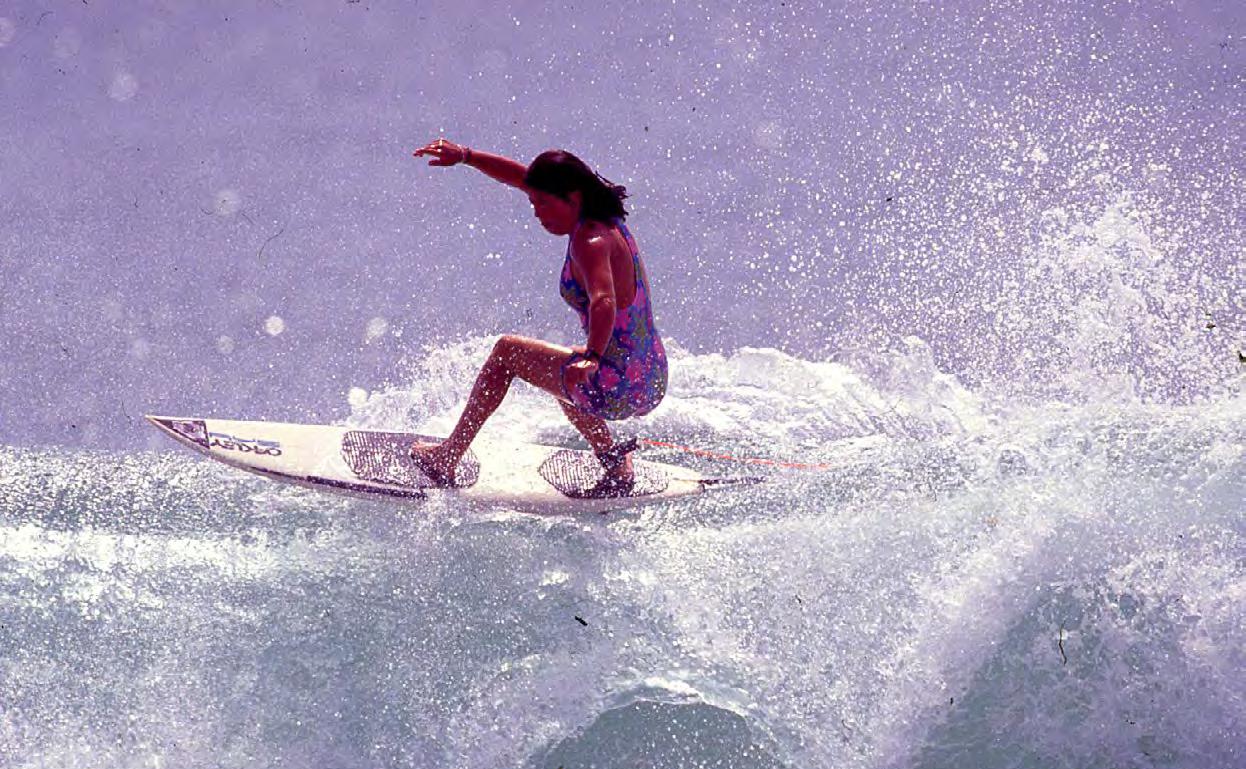
27 minute read
Inspirational Australian Women: Pauline Menczer Patricia McDonald Elizabeth Macquarie Sabrina Shardlow
Inspirational
Australian Women
Advertisement
“The idea for Inspirational Australian Women came to me after receiving a copy of the Wakefield Press 2020 release, Trailblazers. Trailblazers tells the stories of 100 inspiring South Australian women. My thoughts centred on celebrating the lives and work and achievements of women, nationally. This, Inspirational Australian Women, will be an ongoing part of The Last Post. The women celebrated within these pages will come from an array of fields. You will be amazed at their stories. The fight for a ‘fair go’ for women continues today, with women still paid less and underrepresented in the top echelons of business and politics. So here it is, Inspirational Australian Women. We aim to shine a light on the breadth of achievements of Australia’s women.” – Greg T Ross, Editor
Pauline Menczer
Pauline Menczer (born 21 May 1970) is an Australian surfer. She won the 1988 Women’s Amateur World Title and the 1993 Women’s World Championship and has been a long-standing competitor on the world championship tour. Her story is featured alongside other women trailblazers on the formative professional tour in the new documentary Girls Can’t Surf.
GTR: Pauline, thank you so much for joining us here at the Last Post podcast. How’ve you been? PM: Great. Really happy after everything that’s happened lately. GTR: Yeah. How important was the success of the campaign to fund that prize money that you didn’t get for winning the World Surfing title in ‘93? How important was that for you? PM: For me, it was really important. I mean, the money’s a bonus, don’t get me wrong, but just the recognition, because for years and years being at the top of my sport and at my time, the 20 years I was on tour, I was one of the top winners, I’d won 20 major tournaments and eight of the other QS events. And I never really got recognized for it. And the last couple of years I’ve been unwell and I was laying around feeling sorry for myself and I thought, “Wow, I kind of feel like I achieved a lot in my career and didn’t get any recognition for it.. And then now for it to come along and the GoFundMe to reach its goal, it really showed me ... To see how quick it reached 25,000 and showed me how many people actually have always supported me within the community, but not necessarily within the surfing community. I mean, not the community, surfing sponsors. Because I did recognize quite a lot of the names that helped out and to get that kind of money that fast, I felt like it was people that knew my story. GTR: Yeah. Did you feel the love? PM: Oh, absolutely. The love has been incredible and I think it’s been a big part of helping me heal at the moment as well. GTR: Yeah. And when you bring up the point about the number of titles you’ve won, was it 20 WCT and then eight of the WQS, I think it was? PM: Yeah, correct. GTR: Yeah. Which I think, I interviewed Layne Beachley a few years ago, but I think that’s the most from an Australian woman surfer outside of Layne? PM: Yeah. I’m not sure what the record is now but for a long time I was on par with, I think Kelly Slater, Andy Irons, I remember being on par with them. I think I won that much because I had to, so my mom always taught me there’s a positive in every negative. And the negative was, I didn’t have the support but I was really successful because I had to be. There was times that I had $100 left and I’d have to go to Europe, I was in America and I’m like, “Oh no, I’m not going to be able to get there.” And then I’d turn around and win that event. And that seemed to happen to me quite a lot. So I did well under a lot of pressure. GTR: You bring up a good point, we’ll speak about how you won and the things you had to through to win and actually to stay on the tours, Pauline. But that, was it a visualization of winning or was it just that things happened to fall into place at the right time for you? You just mentioned about not having enough money to get to America or worrying about that at least and then winning a title on the back of that worry. Do you think that brings out the best in you when you’re in a corner? PM: I think my arthritis was bad quite often because of the stress of having no money, so that was hard. And that was probably my biggest challenge is overcoming pain and stiffness and just trying to get my body to be normal every day. It was such a challenge that the competing side of it, when I put my mind to it, I was able to achieve what I needed to achieve because like I said, my daily struggles were so hard that once I put my mind to winning, I just seem to do it quite well.
GTR: That’s right. It’s amazing what we have inside of us that we sometimes don’t unleash. And you seem to have unleashed a lot of that positivity throughout your career and even now, by having your story shared to Australia and the world through Girls Can’t Surf the movie and the fact of what you’ve done with your chosen sport, surfing. I know some don’t call it a sport but let’s just say sport for the time being, but was it more than a sport for you? I mean, you started at 12 or something, at Bondi or? PM: Yeah. It was a lifestyle for me, it was not just a sport. To be a professional surfer, you have to be one of the best but you also have to have everything right around you, I had my partner traveling with me at the time and I had a really good coach here, Steve Foreman in Byron Bay. And so I had that network of people around me that really helped me piece it together. And I don’t know how they go nowadays but when I was doing the tour, it seemed to be that most people that won a world title were ones that weren’t just traveling on their own, they had some kind of support network around them. GTR: And of course you had your coach who was your lover? PM: Yeah. So that was what I called her at the time, because back then it was ‘80s and ‘90s and it was really hard to get sponsors as it is and then hearing that Jody lost her sponsor because she was gay, I thought there’s no way I’m going to come out at that time. And then also there was a lot of murders in Bondi and one of them happened to be a guy that lived only 10 doors up from me and I knew that he died, but it wasn’t until 10 years later that they did an inquiry and found out that these guys were all murdered because they were gay. And so that made me really quite fearful of coming out. And yeah, it was hard because I’m a very honest, truthful person. It was really strange for me to never really let people know who I was. Yeah, I guess... GTR: That’s a part of you, a vital part of you? PM: Yeah. It is a big part of me. And I guess being a competitor but also dealing with my arthritis really built my character. So I was able to handle not being open about that and also having a partner that was accepting of me hiding it because that’s also a really hard pressure to put your partner under. GTR: You spoke about the tour briefly...what was it like back in the ‘80s and ‘90s? You hit the scene and you had, I think, a really good year in ‘91 before you won in ‘93, but above and beyond all of that or not above it, but as part of all that, what was it like to be a girl female surfer during that period regarding respect and everything else attached to respect? PM: There was always a mixture of both. There was really supportive men and women around me and then there was the real chauvinistic, disrespectful, nasty side of it as well. And I chose to turn a blind eye to the nasty people and just latch onto all the good people. And when it got really bad, I just started to stick up for myself, I’d just had enough. I grew up in Bondi where it was pretty tough and had three brothers that were pretty tough on me as well and then when things happened that I didn’t believe were right, I’d be just really loud about it. And I never forget one of the judges at one stage in a meeting with all the girls said, “Why don’t you girls actually come forward and tell us when you’re not happy with us?” He said, “The only person that actually comes and tells us off is Pauline.” So I don’t know if that was a good thing or not, but he said he learns from people telling them what they think and so when he said that, it made me realise it can make a difference if we all stick up for ourselves. And when it came into the ‘90s, a lot of the girls were just so fed up that all of us decided to take a stand and decided not to surf certain waves
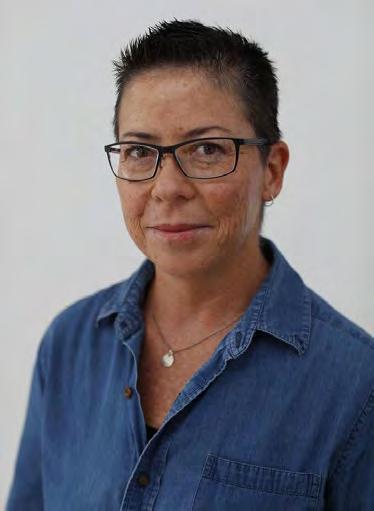

and create our own little organization where we had our own representative go forward and represent all of the women. And it really was a turnaround for us, but also the guys thought it was a battle against us and them, whereas it wasn’t really, we just wanted equal rights. We just wanted to surf the same kind of waves, get the kind of money. And so they started even trying to put us out in worse waves. And then that’s when we would just send our representative forward and to say, “No, we’re not going out.” And then that worked and then we realised we did have some power and then slowly through time and even now that I’ve finished, it’s just gotten a bit better and a bit better and a bit better. So to where it is today, equal prize money is absolutely amazing, a lot of us think it would happen in our lifetime. So it’s really wonderful to see. And the other thing I have to say is, you see the young 10 to 14 year olds now, they’re absolutely incredible, they’re surfing as good as the guys and all those guys that said, “Girls will never surf as good as the guys.” Look out, because this next generationGTR: Yeah. It’s been amazing. PM: ... you’ll be surprised. GTR: And it seems to be a reflection of some of society’s feelings and not too many let’s hope, but in the ongoing fight for respect and equality for women, some men do seem to think it’s a battle against them, but that’s not the way it is and people should be able to see that. PM: Yeah. I find that most of the guys who react that way are actually uneducated and just their lack of education feels threatened by women where they shouldn’t be. GTR: Yeah, that’s very true and good on you for bringing that into focus at a time where this is really part of the conversation we need to be having as a country and for you being an inspirational woman and inspirational surfer person. I was just thinking before, when I called surfing a sport, Nat Young would kill me. He would kill us if we called... He doesn’t like it being called a sport. PM: Yeah. But what’s Nat Young’s voice? He’s very anti-everything, he’s anti-women. I’ll never forget when he said that comment on the news that we couldn’t surf. And I was very quick to ring up his wife and say, “Tell your husband what I think of him.” I won’t repeat the words I said, “And I’ll go against him in a heat any day.” GTR: Wow. PM: And yeah, that never happened but... GTR: That would’ve been interesting, that would have been a Clash of the Titans. PM: Yeah. So it very much so is a sport, no matter what Nat thinks, it’s an amazing sport. And the way that surfing has pushed it now is to an amazing level of the gymnast. When I was surfing, we didn’t have to be fit like gymnasts but nowadays they seem to be so fit and you see them training all the time on Instagram. They’re absolutely incredible athletes. GTR: Amazing stuff. A lot of this came about through, I suppose, the movie Girls Can’t Surf and we had the director, Chris, is it? Chris is lobbying Waverley Council for a statue for you, which we’ll talk about in the moment, Pauline. But the movie Girls Can’t Surf, what’s your view of the movie? PM: Well, we did interviews for a good six, eight hours and I gave a lot of my own footage and I’m sure a lot of the girls gave a lot of their footage and we really had no idea. And so a year passed and because of COVID, but still wasn’t released and we were getting quite antsy thinking, “When is this going to be released?” And we’re lucky enough to be able to see it at home, we’re all given the link to it for a week and mind you, it wasn’t on the big screen but we were all blown away. Because it was again restrictions, I think I had 10 people at my friend’s house and then 10 people come to my house to do two showings in a week. And we got put through every emotion, laughing, crying, angry and really inspired. And there was quite a few people there that didn’t surf and I said to them, “What did you think about the film?” And they said, “It doesn’t matter that you’re not a surfer. I find it so inspiring and absolutely awesome.” And just after seeing everyone’s reaction and it was like everyone was buzzing, I just knew it would do well. And then when we saw it on the big screen, I was like, “Wow, it’s just absolutely incredible.” It’s in your face, so many emotions. Yeah, and then even after the first premiere in Sydney, I got so many messages of people saying, “Thank you.” And, “You girls are inspiring.” And even people who have the same illness as me just saying, “Thank you for not giving up. Now you’ve given me inspiration.” And so it made me realise this movie is so important in history, not just for surfing but in general, as role models and just pioneers pushing through, whether it be a sport or anything. It made me realise just how important this movie is. GTR: So you’re a mentor to people and not only you but the women surfers that are being recognized as

equals and you provide mentorship for many young men and women. I was listening to the radio yesterday about the women’s cricket and they’re in New Zealand and they asked this young guy who was about 12, what he thought of this particular male cricketer? And he said, “Oh, he’s great but he’s not as good as such and such.” And he mentioned a female cricketer’s name. Which was a wonderful moment for recognition in such a young lad. PM: Yeah, that sounds awesome. And I’m just watching the surfing today and listening to the commentary and it used to be so different where they’d say, “Oh, that’s good for a girl.” And so all that’s changed and it’s wonderful seeing it. Again, seeing all these really young girls, the videos and who’s sharing them, the top guys are sharing these videos of girls. They’re really inspired by it. So it’s really nice to see that they’re not threatened anymore, they’re just treating them just as good surfers. GTR: Yeah, indeed. And how’s Chris coming along or the people involved in lobbying Waverley to get a statue of you at Bondi because of course that’s where you started, as we’ve mentioned before? What’s happening with that? PM: So as far as I know, they’re putting it to the general public to see what they want to do. The reaction I saw from Bondi so far is that everybody really wants a statue. So I’m not sure what’s going to happen if it goes through a certain process but I was told that they’re definitely doing a mural for now and a section in the Pavilion and then I guess we wait and see what happens to the statue. I think they might have to do a CrowdFundMe or something like that if that’s what they decide to do. GTR: Yeah. Well, that’s wonderful. It’s a mural of you and at the Pavilion? PM: Yes. GTR: Oh, that’s wonderful. That’s good to hear. Because I was thinking of getting in contact with Chris but I’ll speak to you about that later. So now of course you drive the school bus, Pauline and what’s life like up there for you? PM: I love my job. I actually took time off during COVID because I’ve got no immune system myself and I really missed it. I’m doing a little bit of a different school run at the moment but the school run I was doing before, there was quite a lot of kids on there that surf. And so they’re always asking for hints and I love helping them as much as I can. And then we all surf at the same local beach, so it was really nice to go down there and I wasn’t surfing again, but I was up on the wall saying, “Do this or do that.” And yeah, I really missed it when I had the time off and being back doing it is really wonderful. And a lot of the kids on my new run didn’t know who I was and what I did and now with all the media, they can’t not know. And quite a few of the kids that surf have started to come up to me now and started talking to me. So it’s really nice. Hopefully through being a bus driver and a surfer I can encourage kids on the right track of doing something that’s really wonderful to do, it’s free to go surfing each day, keeps them out of trouble. And I’d say that I’m a kind bus driver but strict, so still trying to teach kids right from wrong and have that respect when they hop on the bus. And when I first was doing it, the kids were absolutely out of control on this new bus run, they were jumping from the ceilings and loud as anything and I’m like, “Right, my mission is to settle these kids down.” And now they’re really quite wonderful. GTR: Mission accomplished. PM: Exactly. Took a while. GTR: I just remember, as you probably do school days on the school bus going home. Geez. That was incredible. Yeah. I was always very good, of course. PM: I think we’re all naughty but it always is the afternoon run that’s a bit crazy because they’ve been hyped up all day or it depends on how much sugar they’ve had, doesn’t it? GTR: That’s right. Exactly. That’s the danger run that’s for sure too. You deserve an award, apart from the surfing, just that. So it’s been marvellous talking to you, Pauline and as recognition of just a great achievement and recognition of recognition and the way things have panned out is quite wonderful. But as you said about your mental capability to jump hurdles, this has come at the right time and produced what looks like a happy ending. So I thank you. PM: Yeah. It’s just awesome. And also for me to be going through another illness, it’s kind of quite similar to arthritis, it’s called pemphigus vulgaris and it’s a very rare autoimmune disease and basically that attacks your skin. So it’s kind of like arthritis instead of attacking your joints though, your skin blisters and it’s incredibly painful. And so that’s been actually one of the hardest journeys of my life and now I’ve come through that, still got it but I’ve got it under control, to get all this love, I feel like I’m healing so much more because of it and to come out of that and be where I am today, I’m pretty stoked. GTR: Fantastic. It’s an excellent time in your life in regards to recognition and thanks for being part of this, Pauline it’s been absolutely wonderful. PM: You’re welcome.
Patricia McDonald Patricia McDonald began work as an Education Officer at the Australian Museum in 1953 when she was only 24 years old. With a science education degree from Sydney University and one year’s teaching experience, she dedicated herself to building the Australian Museum’s education program over the next 35 years – her entire working life.

By the time of her retirement in 1988, the Australian Museum Education Department had become world-class resource and to this day Patricia’s legacy continues with over 150,000 students taking part in AM onsite, online and outreach programs each year. Her original office was a room in a tin shed with no water or power, however under her leadership the Australian Museum developed a number of ground-breaking education initiatives that have influenced how museums around the world deliver education programs to students, including the “Museum In A Box” program and production of educational films for schools. Patricia passed away on 11 November 2018 at the age of 89 and left a substantial bequest in her will to the Australian Museum Foundation to be utilised for the purpose of life-longlearning and education at the Australian Museum. The new Education briefing rooms and student amenities recently built as part of Project Discover have been named in her honour as a mark of her dedication to education at the Museum both during her lifetime and beyond. Part of her bequest will also build a stateof-the-art Learning Centre - a multi-zone education space that will support each age/ stage level of learning with educator-led and self-led groups within specialist zones. The Learning Centre will integrate Aboriginal knowledge systems and Western science together to create deeply engaging learning experiences outside the classroom.
Learning by discovering
From the early days Patricia believed in a hands-on approach to a child’s discovery of the natural world, and she encouraged the curators to donate specimens which the children could handle and use. Under her lead, the Education department began its own collecting, firstly with animals of the Australian seashores. In the Sydney of the 1950s, when children were still being taught science with textbooks from England, Patricia recognised a need for information about the Australian natural environment. Thus, she went on to write a book with Museum biologist Elizabeth Pope “Exploring between tidemarks” in 1958 to provide Australian students an introduction to seashore ecology. Patricia started a new educational program in 1965 – The Discoverers Club – where school students could engage with Museum collections and exhibits, complete question and answer booklets on specific themes called Walkabouts and work their way up to attending fieldtrips with the curators. For many students, participation in this program encouraged them to pursue a career in science.
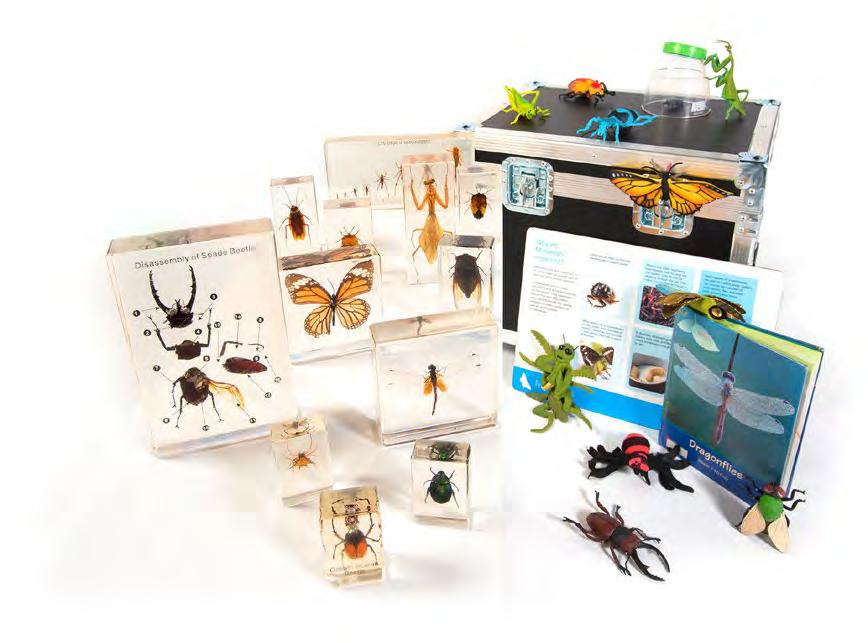
Museum in a Box
After receiving a travelling scholarship in 1961 to study museum practices overseas, Patricia was inspired to introduce school loan cases, with real specimens and teaching resources for use inside schools. Each “Museum in a Box” covered one topic and contained sliding boards of mounted specimens, dioramas, pictures and text. This successful program required ongoing maintenance by dedicated staff and is still in operation today.

Elizabeth Macquarie In September 1804, the curly brown haired, blue eyed, generous smiling, second daughter and clear complexioned twenty-seven-yearold Elizabeth Campbell met a distant relation, Lachlan Macquarie. The then major Lachlan was smitten.
Unconventional, Elizabeth went fishing at Crinan, Scotland, just with the boat crew and the major! When they met again in January,1805 she was aware of his feelings. She must’ve been surprised when he said he couldn’t marry her for four years because he had just been posted to India as and Lt Col of the 73rd Regiment and he had made a vow to his previous deceased wife. Macquarie arrived back in London in October1807. The twenty-nine-year-old bride and the forty-eight-year-old groom married on 3 November 1807 in St Peter and St Paul’s church, Holsworthy, Devonshire. Elizabeth suffered her first tragedy in October 1808 when her daughter Jane died surviving only three months. Overcoming her mourning, Elizabeth left for New South Wales in May 1809 where Macquarie would be Governor. Elizabeth considered herself a temporary exile from Scotland in spite of years abroad. The Dromedary, landed on 31st of December 1809. Barrister Ellis Bent complained that Elizabeth’s first dinner parties were rather too frugal and put that down to her Scotch upbringing. The ladies liked the pleasant Elizabeth as she gave tea parties and concerts where she played piano and reportedly, the cello. Elizabeth arrived with Edward Gyfford’s Designs for Small Picturesque Cottages and Hunting Boxes, and had a penchant for drawing. In 1812 her health deteriorated notwithstanding, her six miscarriages! To add to her misfortune in George Street in October 6, 1813, her carriage’s wheels trampled a young boy and killed him. Elizabeth was involved in the landscaping of the Domain and the building of Mrs Macquarie’s Road. In Parramatta she planted the park around government house with fruit trees. Elizabeth discussed design with Francis Greenway especially the Barracks and St James Church and other public buildings. She also advised John Watts (prior to Greenway) on the design of the military hospital on Observatory Hill. Elizabeth stayed a few weeks at the Macquarie Field School where her seven-year-old son Lachlan was educated. There she spent her time reading and enjoying the leisure time away from government house. The Macquaries left Sydney in January 1822 in controversy over the Governor’s capital building expenses. On the 1 July 1824 Macquarie died in London. Elizabeth didn’t want a post-mortem and she herself died in 1835. They are both buried in Mull, Scotland. Lachlan her son died only 32 in 1845.
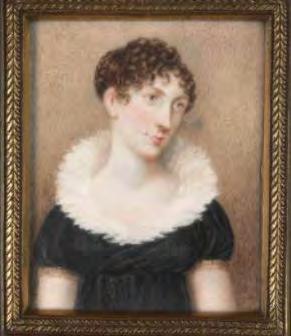
MICHAEL BEASHEL
Nikki Hollis
Nikki Hollis became President of Sydney Legacy in September 2020, and is Sydney Legacy’s first female President.
Born in New Zealand, Nikki was educated in Auckland, and then moved to NSW where she worked in the building services design industry spending the last 20 years in the NSW Government Architect’s Office, retiring in 2016 as a Senior Designer, Electrical Services and CAD Manager, Building Services. Nikki has always respected those in the Defence Forces of Australia and New Zealand, and became involved in Legacy eleven years ago, serving on Sydney Legacy Club Management Committee and as a Director on Legacy Club Services. Nikki has been a member of the 4th Generation Working Group Committee for the past 6 years, a committee dedicated to supporting the families of those from contemporary wars with complex new mental and physical health conditions. Through her work on this committee, Nikki has supported those who have given their lives, as well as those who have given their health to their service, and advocated for the complex needs of these families. Nikki has one son, Karl, who lives in Christchurch with his wife and three children. Due to the COVID-19 pandemic, this is the longest time Nikki has gone without seeing them. Nikki is ‘all things Australian’ except when it comes to Rugby – she is an All Blacks supporter through and through.
Sabrina Shardlow
When you ask Sabrina Shardlow about her experience gaining employment, she has quite the story to share. Like many Australians, Sabrina has had great difficulty finding work; however, Sabrina faces a rarely discussed barrier.
“My disability has repeatedly knocked me back since I left school, it has been really hard for me to get a job,” Sabrina said. To help ensure that others have an easier path to employment than she had, Sabrina has bravely lent her story to the new STEPS Employment Solutions #SeeMe campaign. The national campaign launched in March and gives the opportunity to young adults with disabilities, mental health issues, or other barriers who are looking for employment to share their stories. “I wanted to be a part of #SeeME to try to help people with a disability get jobs and help give them a chance,” Sabrina said. “Just because someone has a disability doesn’t mean that they cannot do things. “If you give us a chance and we can be so successful at so many things.” The #SeeME campaign heavily emphasises the need for employers to see past disabilities and see the unique traits and qualities that these young adults can bring to a working environment. “I’m on time and punctual, I’m very friendly and I’m never late to work,” Sabrina said. “I wish employers would see me as hardworking.” Beyond the campaign, Sabrina plans to continue advocating for inclusion on a more personal level, with her dream job being as a support worker for those with disabilities or mental health issues. “I’m so passionate about helping people in the community.” “I hope that through working with people in a similar position to where I was, I can give them the confidence that I never had.”
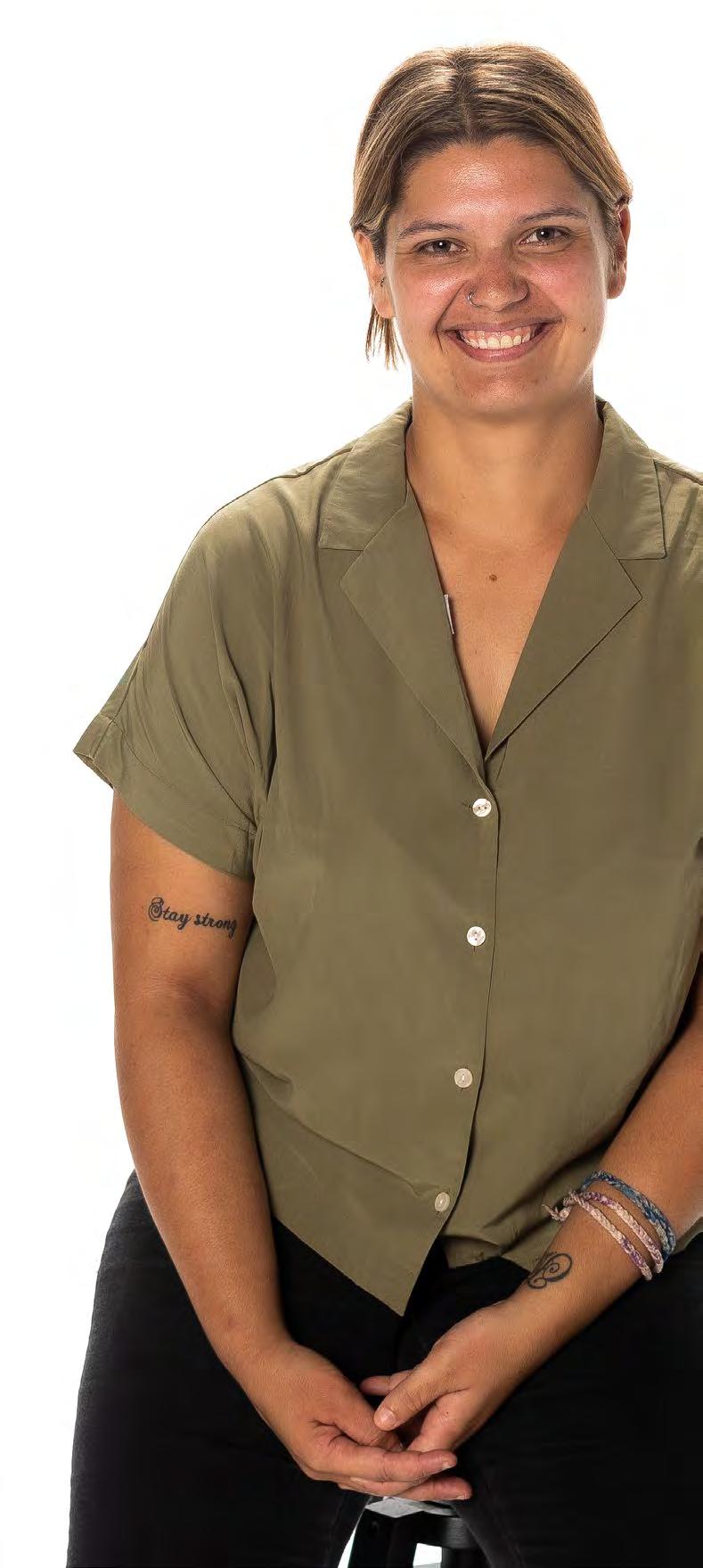


About #SeeMe with STEPS Employment Solutions: STEPS Employment Solutions’ latest campaign #SeeME is providing people with a disability, mental health issue, or other barriers to employment the opportunity to tell employers and the community about the skills and attributes that make them stand out in the workplace. We want to shine a light on the barriers that people experience when navigating the workforce ad provide a platform where they can share their story. STEPS Employment Solutions is asking employers to join us in breaking down barriers and see the great qualities that make our customers brilliant employees. For more information about STEPS Employment Solutions visit: www.stepsemploymentsolutions.com.au
ABOVE: #SeeMe participants and staffers. LEFT: Emotional responses from audience members at #SeeMe event.
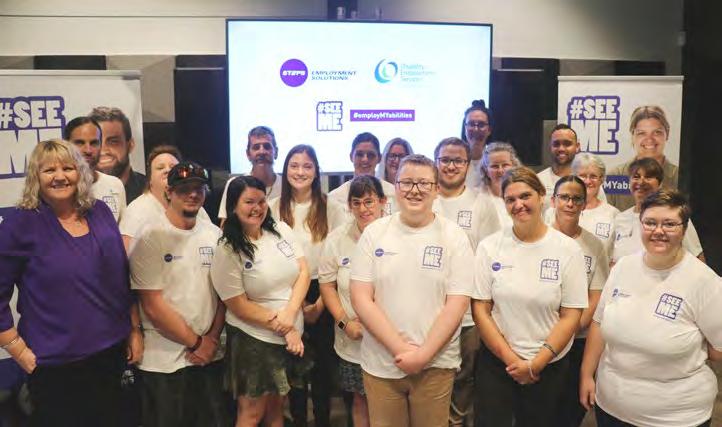
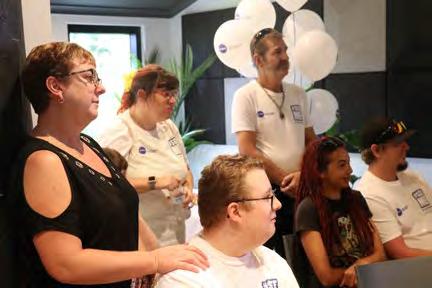
Women Work for Victory in WWII
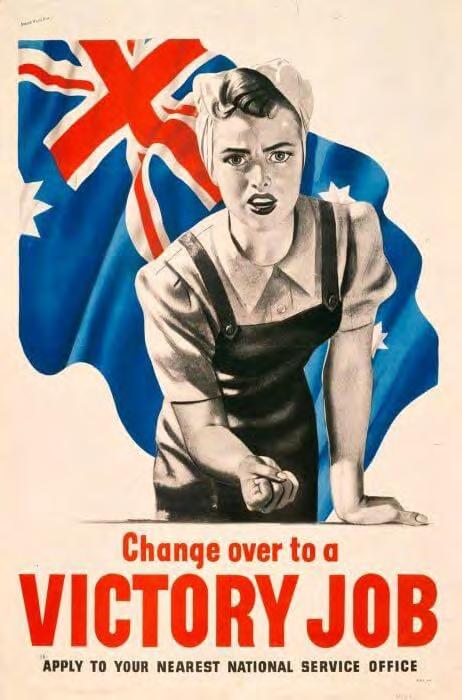
During World War II thousands of women joined the workforce, many working in jobs previously reserved for men. This exhibition explores their story.
From the fields to the factories, the armed services to the home, women produced the food, clothing and munitions that supplied both the Allied troops in the Pacific region and the civilian population. Many of these jobs were difficult and dangerous, but thousands of women responded to the call. Doctors and nurses were needed in the services. Other women joined voluntary paramilitary groups or swelled the ranks of established charities like the Red Cross and the Australian Comforts Fund. The National Council of Women established a Women’s National Volunteer Register and most workplaces had their own Patriotic Funds, raising money for the war effort. ‘Women Work for Victory in World War II’ was researched and curated by the Old Treasury. It was funded by the Victorian Government’s 75th Anniversary of the End of World War Two Grant Program.
FREE EXHIBITION Women Work for Victory in WWII Until late 2022 Old Treasury Building www.oldtreasurybuilding.org.au/work-for-victory











